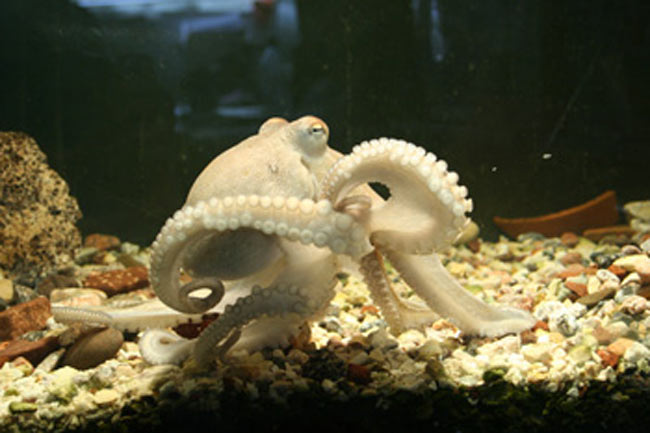Oddly, Octopuses Have Ephemeral Elbows

You might never expect to tell a wobbly armed octopus to keep its elbows off the dinner table, but new research reveals the creatures stiffen their arms to form human-like joints to guide food to their mouths.
A three-jointed human arm has only seven degrees of freedom (DOFs), which are defined as the types of movements each joint can perform. Your shoulder and wrist each have three DOFs—each can tilt up and down, turn left and right, and can roll in a circular motion. Your elbow, however, only has one DOF, which is tilting up and down.
Scientists consider each of an octopus' eight arms to possess a virtually infinite number of degrees of freedom, allowing them to bend and twist freely. But when it's time to eat, octopuses use their flexible muscles to form temporary, quasi-articulated joints that work similarly to how human joints function.
Researchers recorded muscle activity in octopus limbs, and found that an arm generates two waves of muscle contractions that propagate toward each other. When the waves collide, they form a part-time joint.
This process occurs three times, forming a shoulder where the arm meets the body, a wrist where the suckers have grasped their food, and an "elbow" somewhere in between. The elbow typically exhibits the most movement during food retrieval.
The researchers say this is a remarkably simple and apparently optimal mechanism for adjusting the length of arm segments according to where the food item is grasped along the arm.
The similarity of structural features and control strategies between jointed vertebrate arms and flexible octopus limbs suggests that these configurations evolved separately in octopuses and vertebrates, a result scientists call an example of convergent evolution.
Get the world’s most fascinating discoveries delivered straight to your inbox.
The research is detailed in the April 18 issue of the journal Current Biology.
- Rare White Octopus
- Look Mom, No Hands, Hands, Hands!
- Elusive Giant Squid Finally Photographed
- Octopus Doesn't Give Up on Motherhood
- Image Gallery: Life in the Sea


